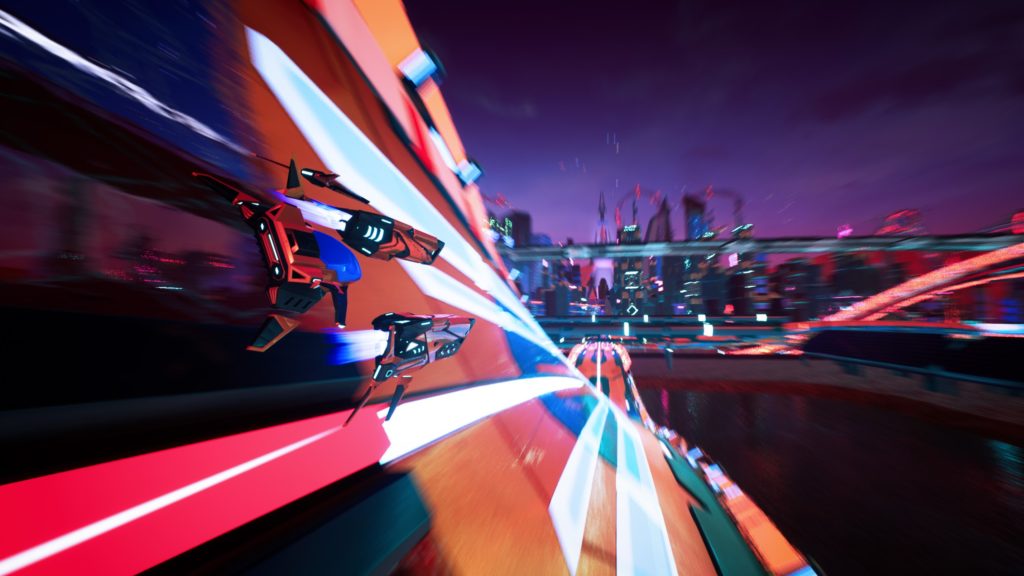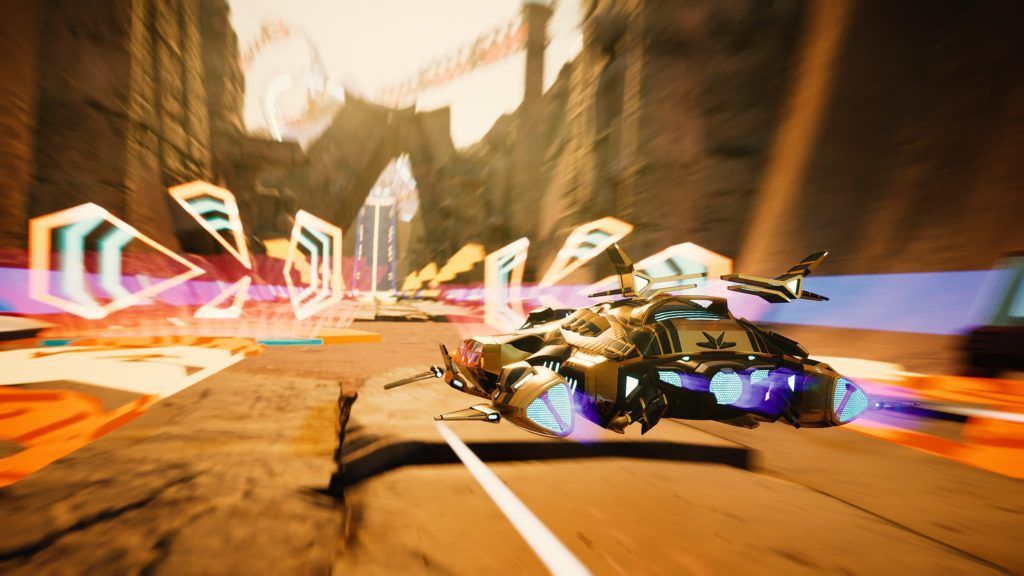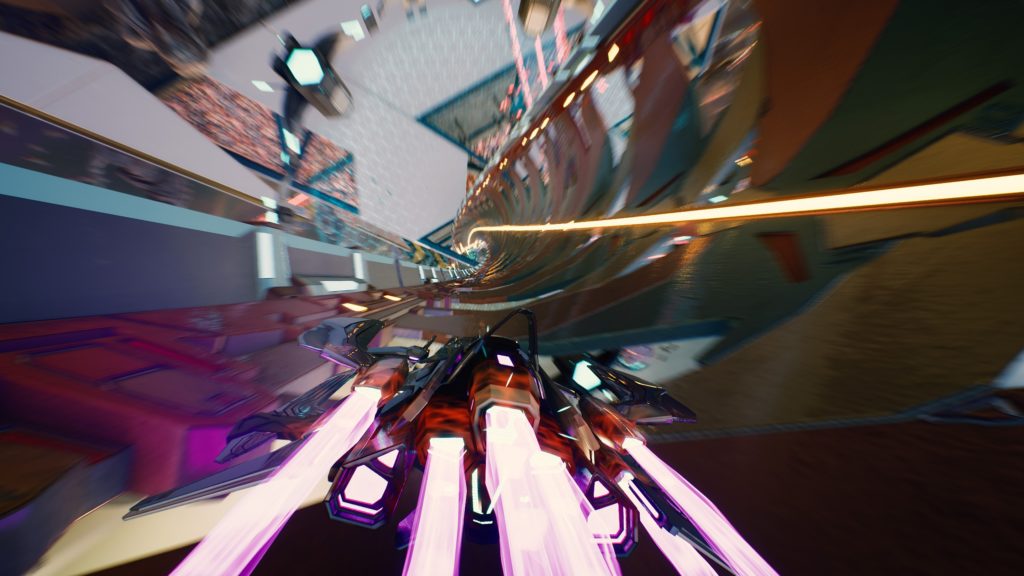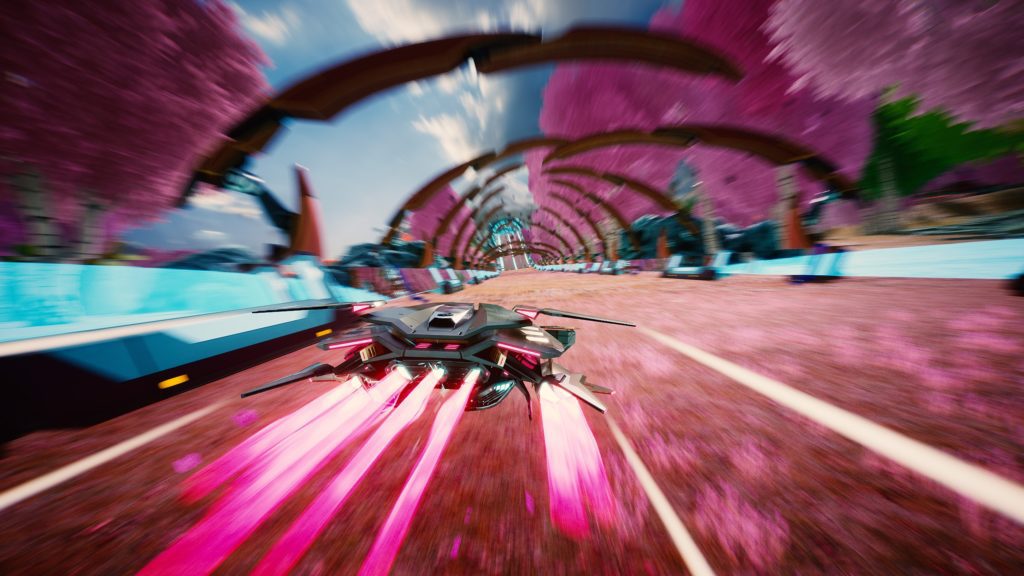REVIEW : Redout 2 (XBOX Series X)
In the style of F-Zero and Wipeout, Redout 2 is a fast-paced futuristic racing game. Redout 2 is exclusively for players who appreciate this genre, as made plain by 34BigThings right away. It’s a tribute to old-school video games at the arcade, where playing nonstop was encouraged (and more quarters). First off, it’s critical for fans of the prior game to realise that all fighting has been removed from Redout 2 by 34BigThings, which instead doubles down on speed. There are no pickups or weapons on the track; all you have are some boost pads and your (hopefully) lightning-quick reactions.
Also, take note that this is not a simple game. Redout 2 will cause you to perspire at every point
Redout 2’s tracks are all wonderfully depicted in neon chrome and sleek glass, with vibrant colours pelting players’ eyes at every turn. Even at top speeds, the swirl of blending hues is so breathtaking and visually engaging that it’s enticing to take your eyes off the track in front of you in order to take it all in. I was looking for assistance online after finding it difficult to complete the tutorial’s Speed mode training when I came across a suggestion that you may use the ordinary turbo ON TOP of a hyperboost for added speed. That kind of blew my mind because it seems like all bonuses in this game are cumulative.

Fuji, Cairo, the Mariana Trench, Tokyo, the moon, and even a black hole are just a few of the unusual places. Each song is breathtaking on its own. If none of that, it’s worthwhile to take your time and enjoying how much work went into making each level. Redout 2 has an incredible sense of speed, which I can’t emphasise enough. The obvious cliché speed lines in the screenshot above may not do it much justice, but when you play this game, you won’t want to blink lest you miss a single second of the fast-paced action. As the Km/h displayed in the UI can be readily edited to reflect anyone what you want to see, it’s difficult for me to evaluate the pace to that of other Zero-G races.
Even better, each location is introduced with a brief history of how it came to be. In these beginnings, a wonderful universe is being built. A small group of billionaires effectively turned the entire galaxy into a development project on steroids. A specific named billionaire whose motivations, character, and objectives are unknown invests in each location. Redout 2’s fantastic sense of speed is made possible by the compounded boosts. You gain speed gradually by avoiding collisions, but you may also use boost pads on the track, a regular boost, a hyperboost with a cool down, and other boosts to combine their effects into one extremely rapid speed increase. Even after the normal boost limit has been reached, you can continue to boost and use your health bar as a resource.

Although the backgrounds are amazing and the lore behind them is fascinating, players seldom ever get to see the more interesting aspects of them or explore the planet they are moving through at breakneck speed. They are obligated to a racetrack, so they have little time to think about anything else as they rush forward and steer clear of obstacles. I do mean the audio type of tracklist when I say Redout 2 has a nice one. I listened to a lot of good music, ranging from straightforward rhythm ‘n’ bass beats to vocal tunes that really got my heart racing. It’s unfortunate that the audio glitch, which would occasionally appear, caused an obstruction. There are no stories or characters except than brief introductions to new settings. Animated postcards with a historical narrative on the back serve as what would otherwise be wonderful locations for a fantastic single-player campaign. There are numerous distinct regions, each with a variety of racing courses, and they all have distinctive qualities that affect your gameplay. You run the risk of veering off course if the gravity is low. You’ll overheat more quickly if you’re flying in the Mars mines, so use caution when boosting to avoid blowing up into a blazing ball by keeping the throttle held for too long.
Even while these racing games are designed to be harsh—the first Redout was renowned for its extreme difficulty—they are nothing compared to how punishing Redout 2 is. While moving at absurdly high speeds, the game demands precise inputs. Players cannot simply hold a stick in one direction to turn to perform anything as basic as turning; when we say precise, we really mean precise. That’s the quickest way to hit a wall ten times and blow up in a neon-lit shower. This need immediately introduces a steep learning curve. For each race you win in the career mode, your ship’s upgrades become available. Your speed, handling, strafing, and other characteristics will gradually but noticeably change as a result of your shop. It’s only a shame that your improvements have a value and you can’t replay the opening races in your supercar that has undergone complete modifications.

The dual-stick steering in Redout 2 is challenging. The right stick is used to strafe and pitch the player’s car, while the left stick is used to turn. Redout 2 put a lot of work into trying to make the tracks experience dynamic, with jumps that would let you fly for miles and perhaps even skip huge sections of the chart if you go full-on Mario Kart Rainbow Road with it. Additionally, there are branching paths, reverse modes, and even Boss tracks where they stitch all of the region’s tracks together for one lengthy race. However, the tutorials don’t do a great job of explaining these features. But the very same jumps are what aggravate me the most because it’s frequently challenging to see where you’re meant to land. It is quite tough to decide whether to turn, strafe, or do both. When players think they know the answer, they are already 40 miles into the next section of the track because there are no cues that suggest which is more suited at any particular point in the race. Outside of photomode, it will be difficult to observe the vehicles and tracks in great detail because the game zooms by everything so quickly. The levels themselves weren’t as enticing to me; I’ve seen games like Antigraviator and Wipeout with prettier settings.

Adjusting the difficulty is the only method to make the game simpler. Those having trouble with the tutorial’s final assignment, though, are unlikely to get better. Only after the tutorial is finished may the difficulty level be altered. It’s permanently locked to a difficult difficulty till then. Strange restrictions like this one can deter casual players. In Redout 2, controlling your ship mostly involves flying it as well as directing it. This implies that you can strafe in both directions on the track and that you must use both analogue sticks to make quick bends. This was just one more request in a game that moves this quickly for me. You also need to pitch your nose to optimise the airflow. There is no way of making the game more lenient besides changing the sensitivity or remapping the controls. Players are compelled to submit data at absurdly rapid, exact, and precise rates. Players are forced to fend for themselves because the game makes no effort to describe the controls. In addition, there are no mobility options, which is a significant omission. Redout 2 is a harsh game, and even the smallest error can lose you the victory. This is frustrating only due to the lengthy load times mentioned above and the fact that it isn’t mentioned below that you can rewind during races.
REVIEW : Planet Zoo: Conservation Pack (PC)














